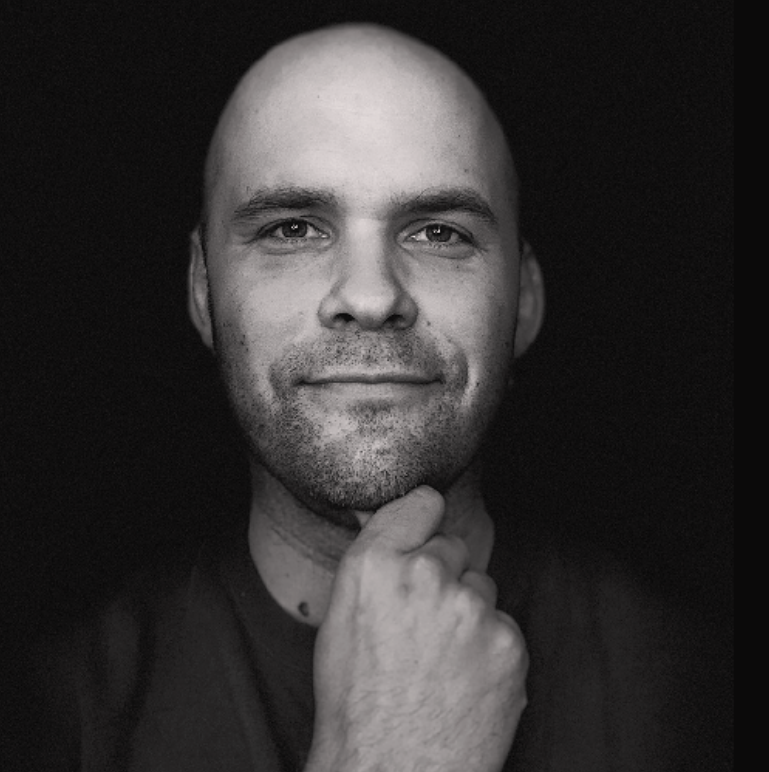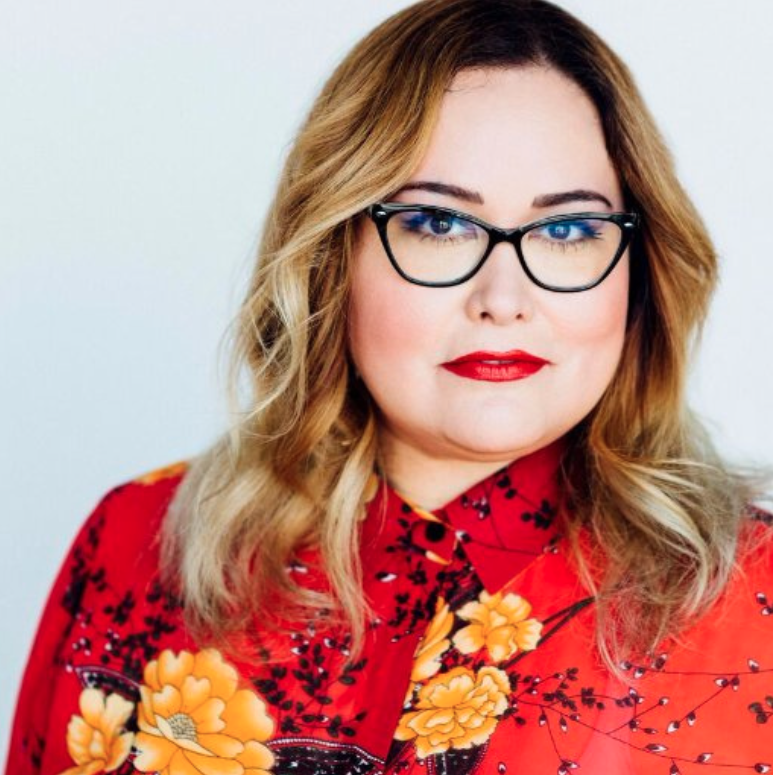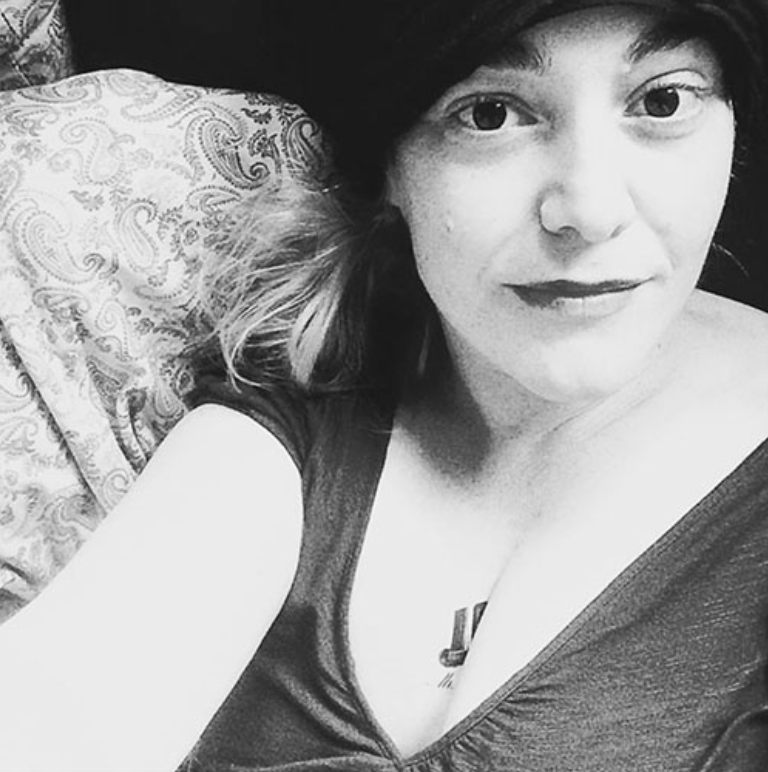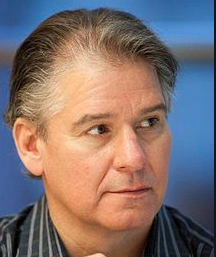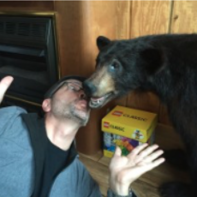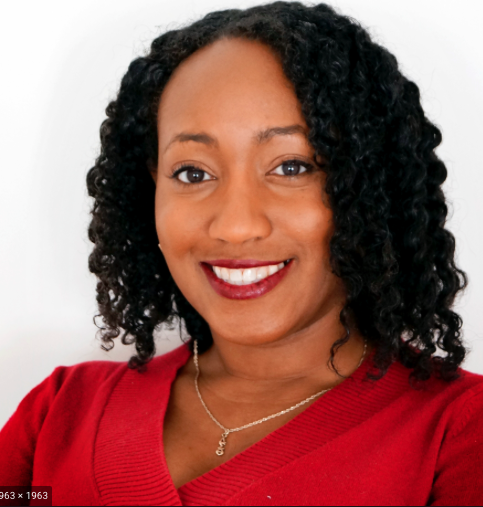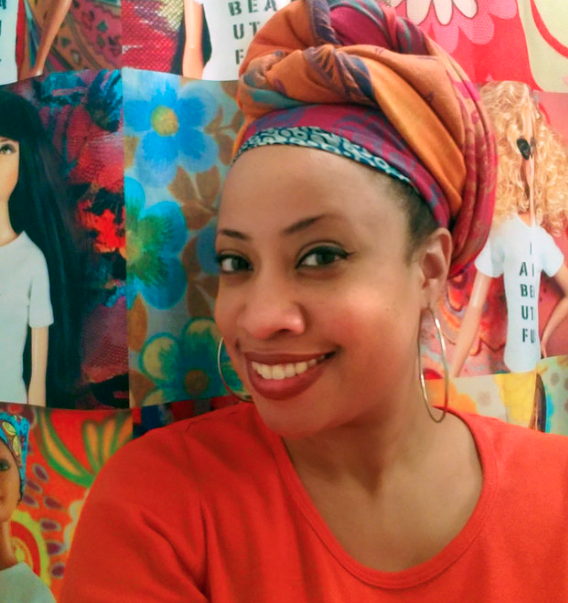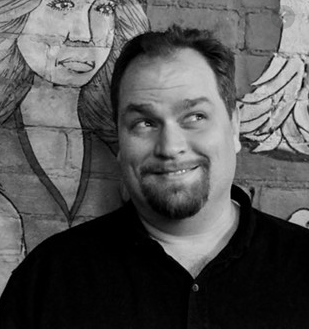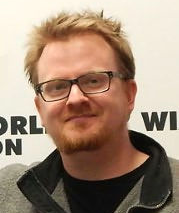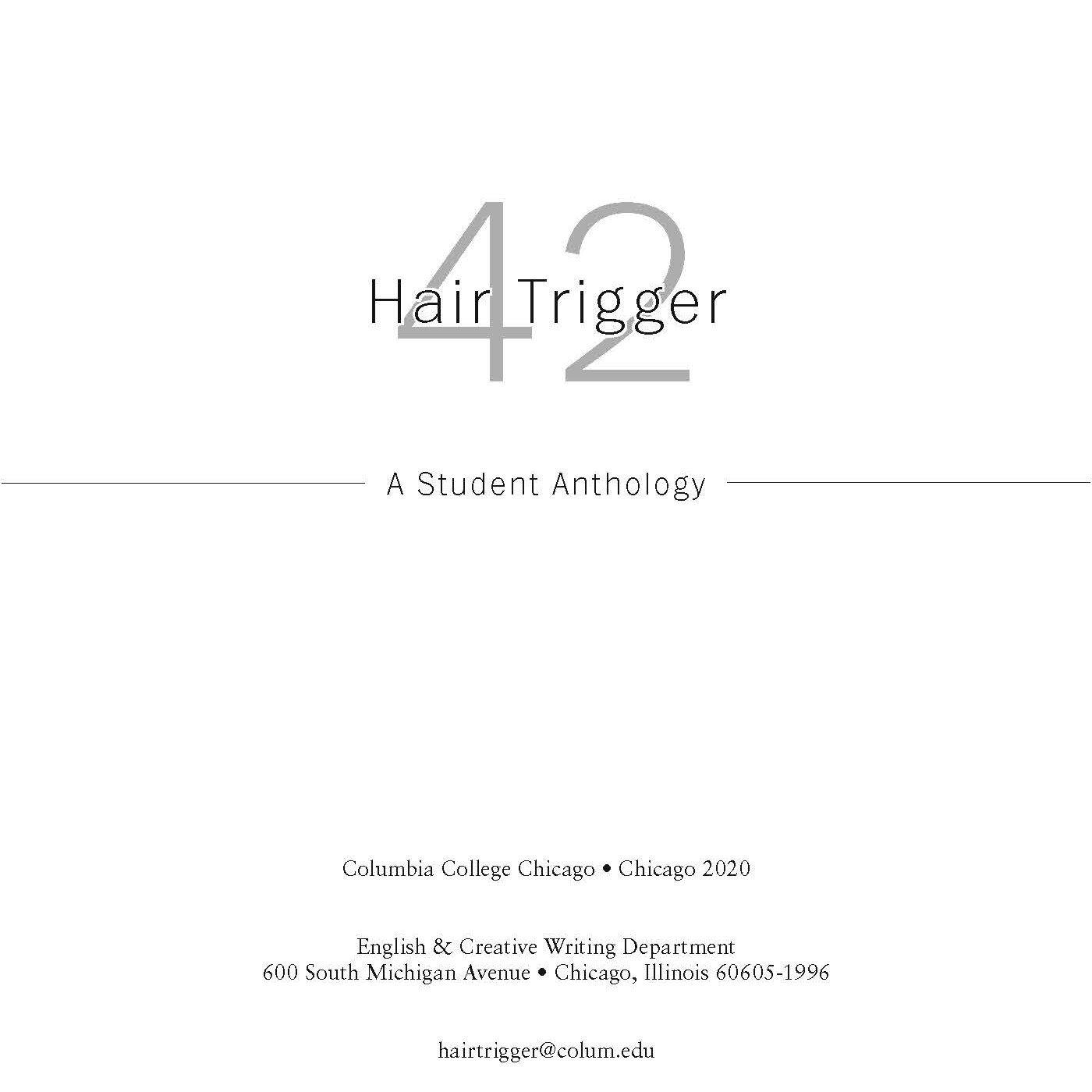On her book, The Loss of All Lost Things
Interview by Claire Martin
When Amina Gautier released her third short story collection, The Loss of All Lost Things, in 2016, it was quick to gain attention in the fiction community. Gautier continues to provide a refreshing and prolific take on writing short pieces in the midst of a market that seems to be driven almost exclusively by novels. Her subject material ranges from the everyday to the unimaginable, but it is all united under a visceral, inspiring umbrella of human understanding of pain.
Her two earlier collections, At-Risk and Now We Will Be Happy, have both received numerous awards, including the Flannery O’Connor Award and the Prairie Schooner Book Prize in Fiction. As a fictional short story writer myself, I was thrilled to be able to sit down and hear about her own approach to storytelling, the modern academic writing community, and bringing her ideas to life.
Claire Martin: Your recent collection, The Loss of All Lost Things, illustrates such a diverse range of material from kidnapping, to librarians, to the streets of Pompeii. What inspired you to bring the stories of all these people together?
Amina Gautier: I’m inspired, simply, to write. The stories sort themselves out into collections much later. I don’t consciously write a story with the intention of placing it in a particular collection; I just write whatever is on my mind, and, later, I look at what I’ve accumulated and take note of what themes are present and which stories seem to speak to one another. That’s how my three short story collections came together. Even though my most recent collection is about loss, some of these stories predate stories in the first two collections. While writing a variety of stories, I kept returning to explorations of loss because the subject is universal—we’ve all experienced loss in some form or another—but our handling of it is unique, individual and particular. That’s what makes it so compelling a topic for me.
CM: You’ve received an M.F.A. as well as a Ph.D. What did you find to be the greatest benefit of pursuing degrees in higher education as a writer?
AG: Actually, I don’t have an M.F.A. degree, just a B.A., two M.A.s, and one Ph.D. I graduated from Stanford in 1999 and aspiring writers weren’t encouraged to immediately pursue M.F.A.s then. The advice I received from multiple sources was cautionary. It warned that there were only a few great M.F.A. programs, that most didn’t offer good funding, that a recent undergrad would be competing with more mature writers who had led full lives and were now returning for the M.F.A. degree, and that it would be better for a beginning writer to go and obtain life experience for a few years while writing privately on one’s own dime, to work up a few strong stories and then consider applying for the M.F.A.
I’d always intended to be a writer, but I was a poor kid from rent-controlled housing in Brooklyn, and the path laid out in that advice would have caused me too many financial burdens. I believed pursuing a Ph.D. in literature and thus committing to six years of formal, dedicated study would in no ways harm my talent as a writer. Furthermore, I believed that it would make me a better writer by putting me in conversation with literary history and scholarship.
Obtaining a Ph.D. in literature allowed me to not just be a voice in the literary conversation, but to understand all of the voices speaking in that conversation. It has given my work depth and subtlety, which is not always comprehended upon the first read, but which becomes more apparent with further study. For example, my first collection At-Risk makes references to Emmett Till, minstrelsy, the performance of blackness, the law of hypodescent, and Milton’s Paradise Lost and my newest collection The Loss of All Lost Things references the Trojan War, the destruction of Pompeii, marital rape, suicide, degenerative diseases, and Trayvon Martin, but the treatment is subtle and nuanced so that most of these references would only be picked up on by the most astute reader.
CM: Your emphasis on short story writing is something I appreciate seeing in a market that’s usually driven by novels. What is it about writing short stories that speaks to you most?
AG: When I was a child, there was a commercial for Tootsie Rolls that aired on television and its jingle went like this, “Whatever it is I think I see becomes a Tootsie Roll to me!” The commercial featured kids playing and everything they saw turned into a Tootsie Roll. That’s how I feel about short stories. The world I see looks like a short story to me. Everywhere I look, I see short stories. Short stories mirror my reality. Many novels tend to be definitive; at their conclusions they often suggest that the action has been completed and that there is no more to be said. That’s not what the world looks like to me. To me, nothing ever seems to be completely finished or all the way closed.
People come to certain conclusions or live by certain beliefs, and then some new piece of information is presented, or some new experience is had that causes them to draw different conclusions. People are always changing, growing, shifting, and never sitting still. Human resolutions are temporary, often offering knowing that is fleeting or tied to a specific moment in time or set of events—just like the resolutions in short stories. When you write a short story, you allow the reader to drop in on characters and get to know them at that moment, but there is always an understanding that you could pop back in on them at a later date and they might be very different people.
CM: What, if anything, do you find to be the most important aspect of making a good short story land?
AG: Heart. I have read many short stories that were technically “good” i.e. they were mechanically clean and they featured all the necessary parts by which we come to recognize a short story—inciting incident, conflict, rising action, denouement, etc. but they fell flat because it seemed that the writers did not actually care about the characters. The characters don’t seem real; they read like types. It is as if they exist on the page only to prove a certain point and once they have done so, the story is over. Somewhere in the process of writing, you have to arrive at the point where you genuinely care about the characters. I do not mean that you have to “like” them or make them “likable.” What I am talking about is an investment of caring. Because you are a human being and your characters are based on human beings, there is a natural affinity between yourself and the characters about which you write; therefore, you should care about them. If you are going to kill off one of your characters, they should not die merely as plot fodder. You should feel their death and it should hurt you. You should grieve and mourn them.
I am not a writer who composes bubbly stories full of rainbows and happy endings; most of my stories are dark or sad and many of my characters are in pain. I feel their pain. In my first book At-Risk, two young boys are killed in an accidental homicide (death by stray bullets); in Now We Will Be Happy, a woman is a victim of domestic abuse, and in The Loss of All Lost Things, a young boy is abducted by a sexual predator. None of these stories were easy for me to write. I did not dash them off without a care. I almost didn’t write them, believing that there was already enough violence and sadness out there in the real world. But I did write them.
Each of those three stories took me years to complete because I cared so deeply about my characters. When writing, there were moments when I felt sick to my stomach and had to stop mid-page because I was crying too much, times when the research was too sickening and graphic and I couldn’t bear to read or watch anymore—I’d have to step away from the stories for months at a time to give my spirit a break. It’s true, they are only characters—they’re not real people, but they deserve to be written with care. You should care about who they are and what they will or will not do and how these actions might affect them for better or worse. Otherwise, why are you writing about them in the first place?
CM: After teaching at institutions like DePaul University and University of Miami, have you found that being an educator has helped your own writing in any way?
AG: Absolutely. Teaching helps keep me engaged and tuned in. I’ve been writing seriously for quite some time now—about seventeen years. As a result, much of my formal training has been forgotten or become second nature to me. When I first started writing, I used to think of stories in terms of their parts and components and I used to revise with attention to certain craft aspects and details i.e. I’d look at the dialogue, and then the setting, etc. But now, writing is second nature to me. I’ve arrived at that stage where I know what I know without knowing how I know it. Since teaching creative writing makes it necessary for me to deconstruct stories, to explain and discuss them one craft element at a time, it helps me to articulate that which I otherwise wouldn’t.
My students also inspire me. I talk to them about what they are reading, why they like certain stories, and in doing so I am sometimes introduced to literature of which I was previously unaware. One student expressed an interest in Japanese literature and culture, which inspired me to supplement the syllabus with short stories by Hisaye Yamamoto and Yukio Mishima. One student introduced me to Lucia Berlin’s story “Friendship” last year, which I greatly enjoyed. As a result of that, I bought Berlin’s collected works and have been working my way through it. I am definitely the richer for these stories making their way into my life.
CM: How do you balance teaching and still managing to write? What does your process look like?
AG: I am learning that this is an ever-evolving process. Teaching creative writing is both an inspiring and time-consuming process. What’s inspiring about it is that you get to discuss writing and literature in an animated and impassioned way with people who care as deeply as you do about the subject matter. A creative writing workshop is a room full of people who “get it”—who get that writing is important, affirming, and sustaining, who understand that writing takes time, effort, revision, and care. For those who often have to defend their avocation, it’s exciting and inspiring to have the ability to convey your passion, joy, and insight to people who actually want to receive it. So, the teaching of creative writing—the discussions and the re-reading of published stories, and novellas I admire—gets me gung-ho to come home and write until my fingers throb and the letters on my keyboard fade to smudges.
However, there’s also the time-consuming part i.e. the amount of time and care that goes into preparing each individual critique for workshop. Once the workshop portion of the course begins, it is a dizzying whirl of reading, responding, and critiquing, which often leaves little to no time to work on one’s own writing. This varies from writer to writer. Many writers work best by carving out an hour or two per day to devote to their own writing, but that doesn’t actually work for me. I prefer large blocks of uninterrupted time for writing and I consider the first two hours of my writing day to be more like sloughing or exfoliating—a chance to write poorly, adverbially even, to rid myself of whatever bad habits or clichés reside in me—to get rid of obvious sentences or details so that I can get to the good stuff underneath, to write my way into a sweet spot where I can remain ensconced for a few hours or days until my brain needs a break and I return to the mundane world while my mind replenishes its creativity.
This has become harder and harder to do because of both my teaching and book touring schedule, so for the past two years what I have done is build my stories during the semesters i.e. write snippets of them in notebooks, etc. and let them simmer, and then I gift myself with writing residencies during the summer breaks, where I can write and revise without interruption and bring my ideas to fruition. During the semester, I give my students their time and during the breaks I give my writing its time. Finding balance is an ongoing enterprise, but what I’ve described is the current method that presently works for me.
CM: Are you involved in any writing communities, and if so, have you found collaborating with other writers to be beneficial?
AG: I have participated in many writing conferences and residencies, such as Breadloaf, Callaloo, Hurston/Wright, MacDowell, Ragdale, and Ucross and I still consider myself to be a part of those communities. Additionally, I am a member of Kimbilio, and a Staff Member for the Sewanee Writers Conference, both of which are very important to me and in which I am deeply invested.
For writers who don’t have the luxury to go away for weeks or months to attend the conferences and residencies above, there is also that literary mecca—AWP. Some writers find AWP to be overwhelming because the conference has grown to such large proportions, but attending AWP is one of the highlights of my year. I look forward to going with the same type of fervor someone else might save for a rock concert. It’s a gathering of the tribe—a four-day respite from a world in which your words have to be translated, a chance to be in a place where everyone speaks your language. AWP is loud and raucous. It’s big; it’s unwieldy, yet it soothes me.
The idea that there is a conference for writers that draws 15,000-20,000 people does not intimidate or overwhelm me; it makes me proud and super happy that there are that many of us out there and that we have a place where we can come together and find each other, and that in that place and during that time, our interactions with one another can give us the strength to sustain ourselves as writers for the rest of the year and until we meet again.
While I don’t collaborate in the sense of engaging in a joint publishing venture with other writers, I do commune with other writers and that is of great benefit to me. I find it to be not only beneficial, but necessary to my sanity.
CM: All of the characters in The Loss of All Lost Things are animated with such relatable, real motives. In writing these people, were there any that you found yourself sympathizing with more than others?
AG: If I am going to write about a character, I have to be able to sympathize with him or her. I have to be able to sympathize with and understand all of the characters in any given story I am writing. I do not have to like any of them or condone their actions, but I do have to know from where they are coming. Although the reader may do so, I cannot sympathize with one character more than another because if I am doing so, that is a signal that my work is not yet done and the story is not yet complete, and I will have to continue revising toward a better understanding of all of the characters.
CM: What would be the best piece of advice that you could have received when you finished your undergraduate degree and entered the writing world?
AG: From Peter Rock and Samantha Chang, respectively, I received two of the best pieces of advice when I finished my undergraduate degree and was preparing to enter the writing world. First, I was told to write ten publishable stories before I submitted the first one for publication. Second, I was told to collect rejections i.e. to make a game out of getting them. Those two pieces of advice have been worth their weight in gold.
They prevented me from falling into the “write one, send one” trap into which I’ve seen so many writers fall. These writers get so engrossed in following the progress of the story they’ve completed that it gets in the way of them producing more work or different work. They wait for an acceptance or a rejection on that story before they complete another. Receiving a rejection letter sends them into a funk and they don’t write anything else for a long time, or if they do have something else completed, they become so scared of rejection that they won’t send it out. Or, conversely, their story gets accepted and they use that as a form of positive reinforcement to keep writing slightly different versions of the same story in the hopes that they will garner more acceptances, thus limiting their growth as a writer and restricting the breadth and depth of their talent. The advice I received taught me to sidestep that trap. I don’t care about rejections. I mean, I am human and rejections do bother me, but they don’t set me back or change my course. I get annoyed for about fifteen to thirty minutes when one comes my way, and then I get back to work.
Amina Gautier is the author of three award-winning short story collections: At-Risk, Now We Will Be Happy and The Loss of All Lost Things. At-Risk was awarded the Flannery O’Connor Award, The First Horizon Award, and the Eric Hoffer Legacy Fiction Award. Now We Will Be Happy was awarded the Prairie Schooner Book Prize in Fiction, the International Latino Book Award, the Florida Authors and Publishers Association President’s Book Award, a National Silver Medal IPPY Award, and was a Finalist for the William Saroyan International Prize. The Loss of All Lost Things was awarded the Elixir Press Award in Fiction, the Royal Palm Literary Award, and the Chicago Public Library’s 21st Century Award. More than ninety of her stories have been published, appearing in Agni, Callaloo, Glimmer Train, Iowa Review, Prairie Schooner, Southern Review, and Quarterly West. Gautier has won the Crazyhorse Prize, Danahy Fiction Prize, the Jack Dyer Prize, the William Richey Prize, the Schlafly Microfiction Award, and the Lamar York Prize in Fiction and received fellowships and scholarships from Breadloaf Writer’s Conference, Dora Maar, Disquiet International, Hawthornden, MacDowell Colony, the Ragdale Foundation, Sewanee Writer’s Conference, Ucross Foundation, and Vermont Studio Center. She is a graduate of Stanford University and the University of Pennsylvania.
Claire Martin is studying Fiction Writing at Columbia College Chicago. You can find her working on creative essays, wandering through Printer’s Row after hours, and becoming fully nocturnal.
April 03, 2017
Tags: Amina Gautier, Claire Martin, Interviews Editor, Author Interviews, Short Stories, Short Story Writing, Sympathetic Characters, Empathy, Writing Fully Realized Characters, Fellowships, Residences, Teaching Creative Writing, Teaching and Writing, Writing Process, Finding Balance, Benefits of PhD, Advice for Writers

